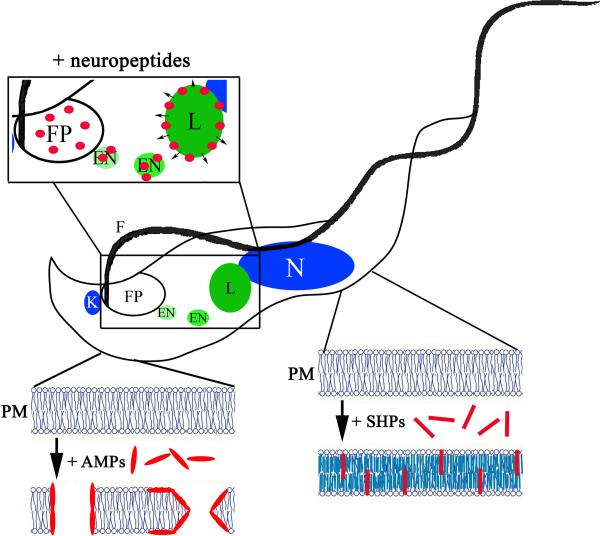Figure 1.
Schematic representation of the multiple mechanisms of antimicrobial peptide killing of African trypanosomes. Antimicrobial peptides exhibit several modes of action against African trypanosomes. Conventional AMPs most likely act through permeabilization of the plasma membrane (PM) in both BSF and PC developmental forms. Killing of BSF trypanosomes by neuropeptides requires that the peptides be endocytosed through the flagellar pocket (FP) and trafficked from the endosomes (EN) to the acidified lysosome (L) where the peptides disrupt the lysosomal bilayer. Small hydrophobic peptides (SHPs) are specifically toxic to BSF trypanosomes. Intercalation of SHP into the plasma membrane results in an increase in lipid bilayer rigidity and non-lytic cell death. (N, nucleus; K, kinetoplast; F, flagellum.)

